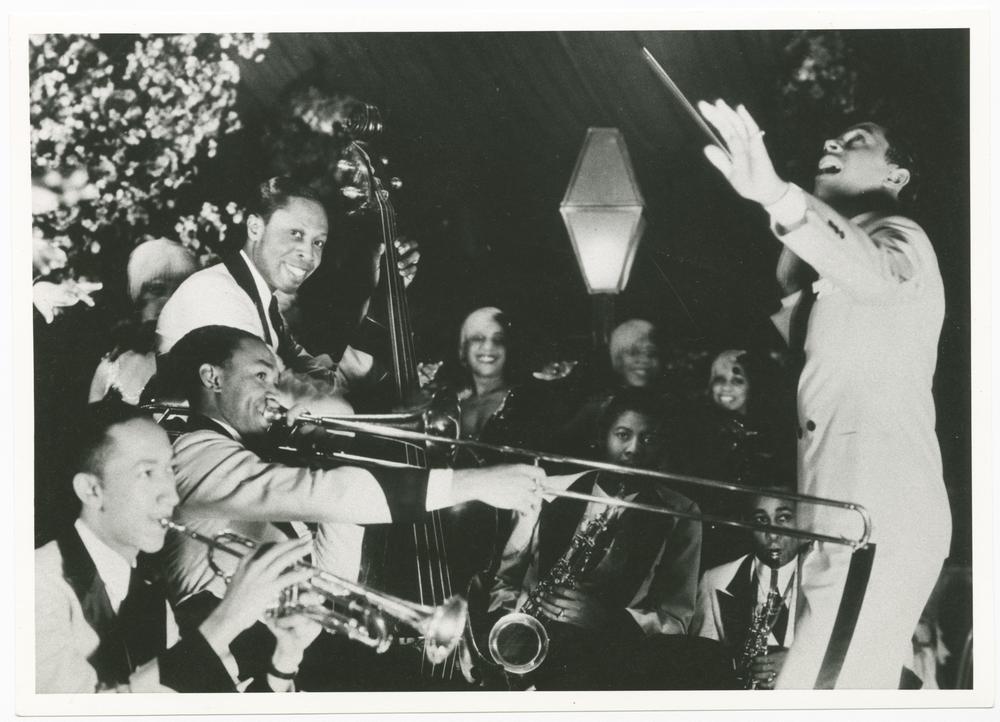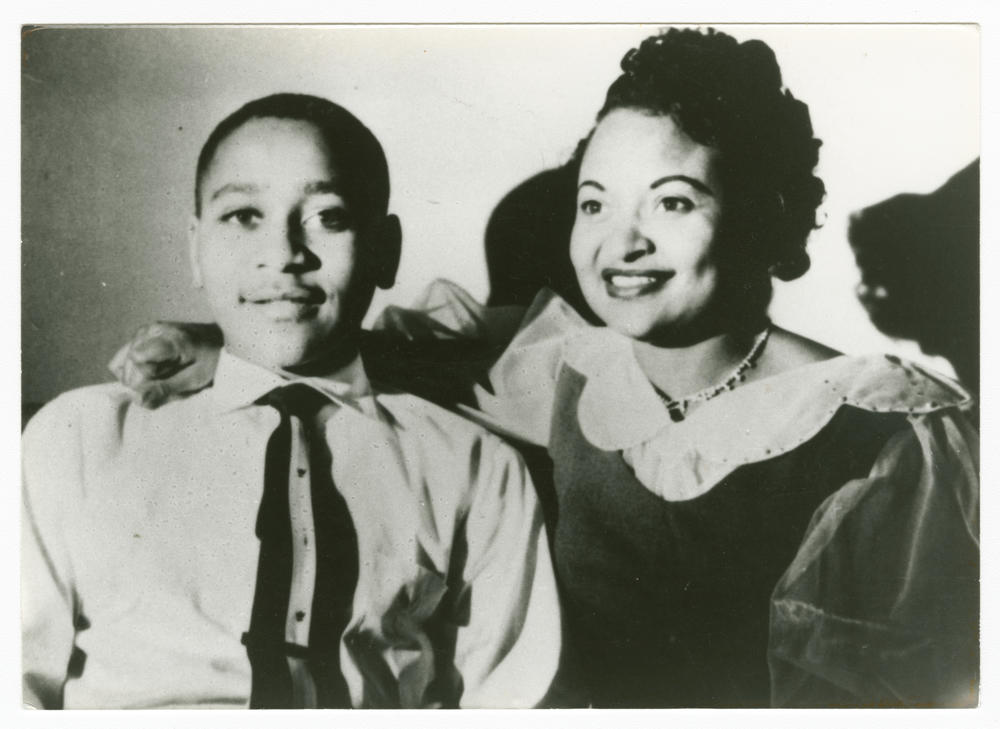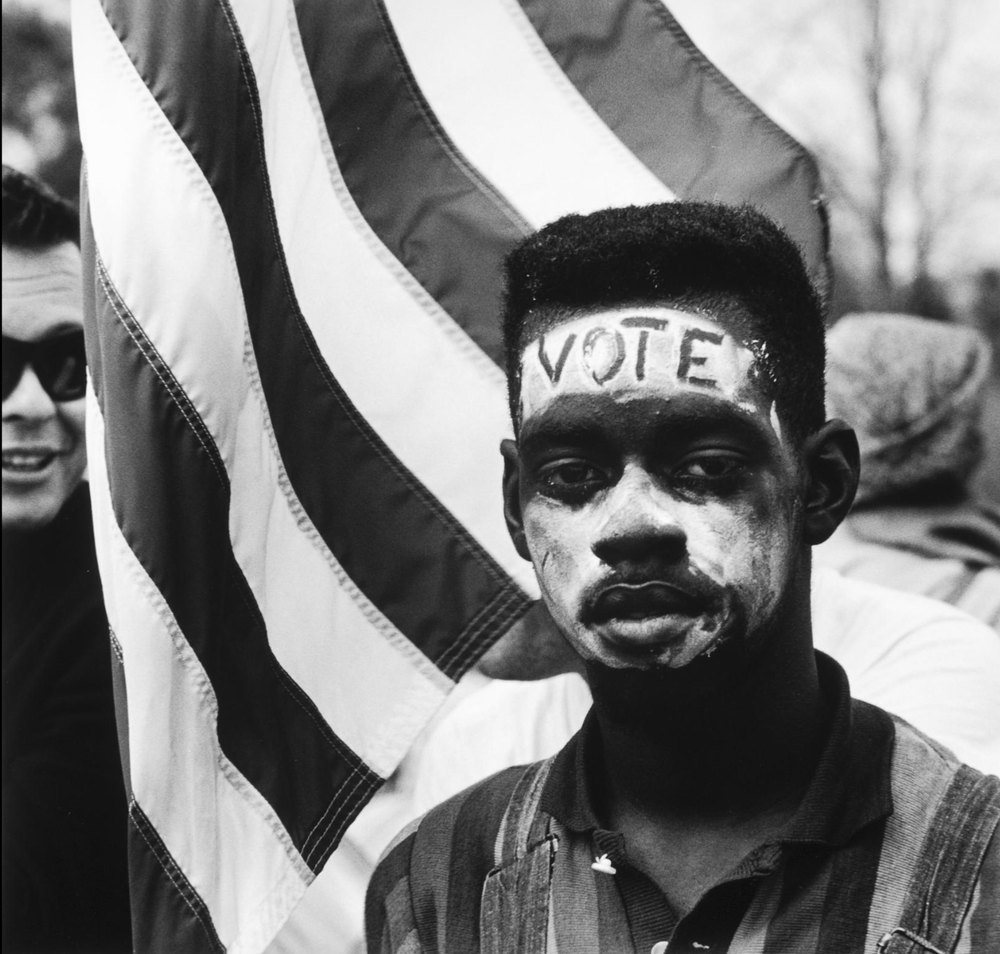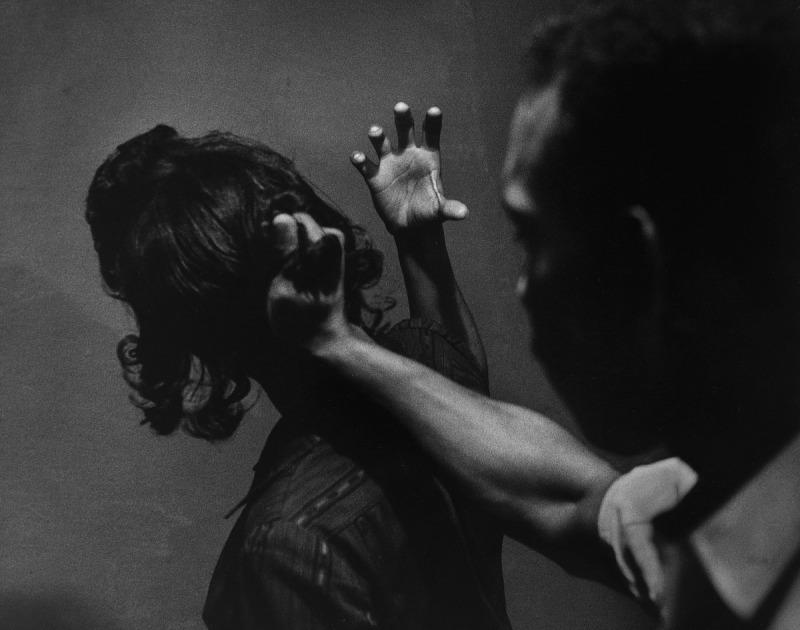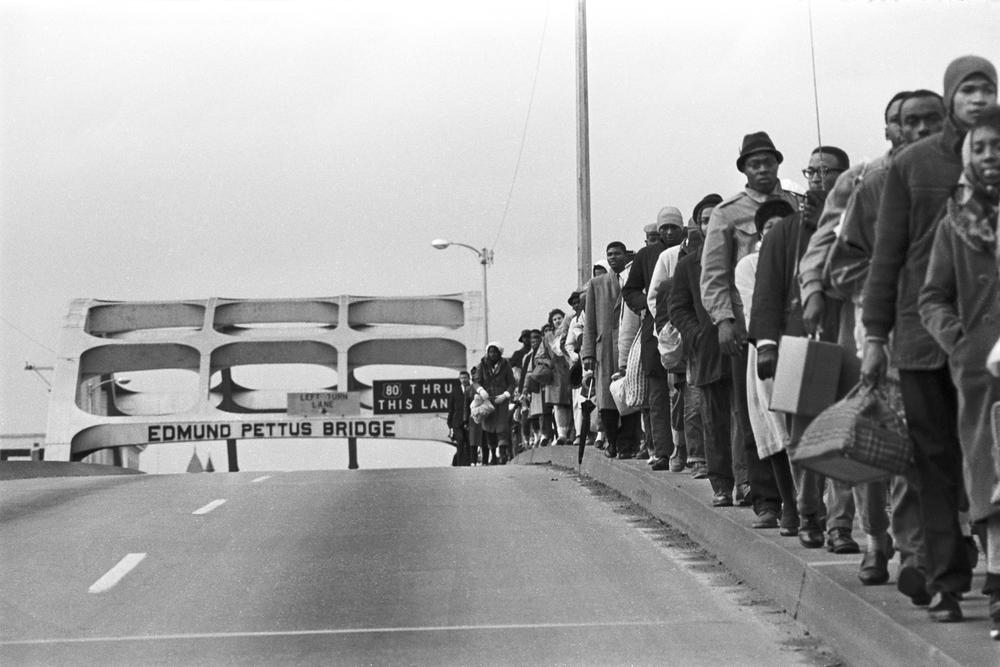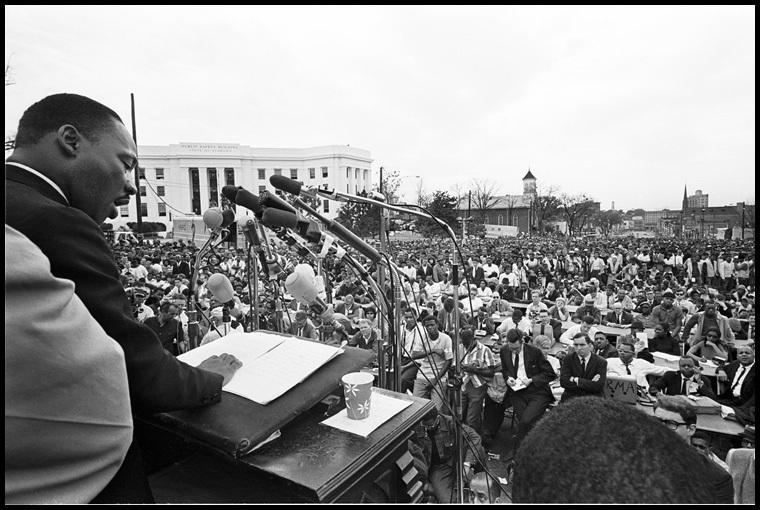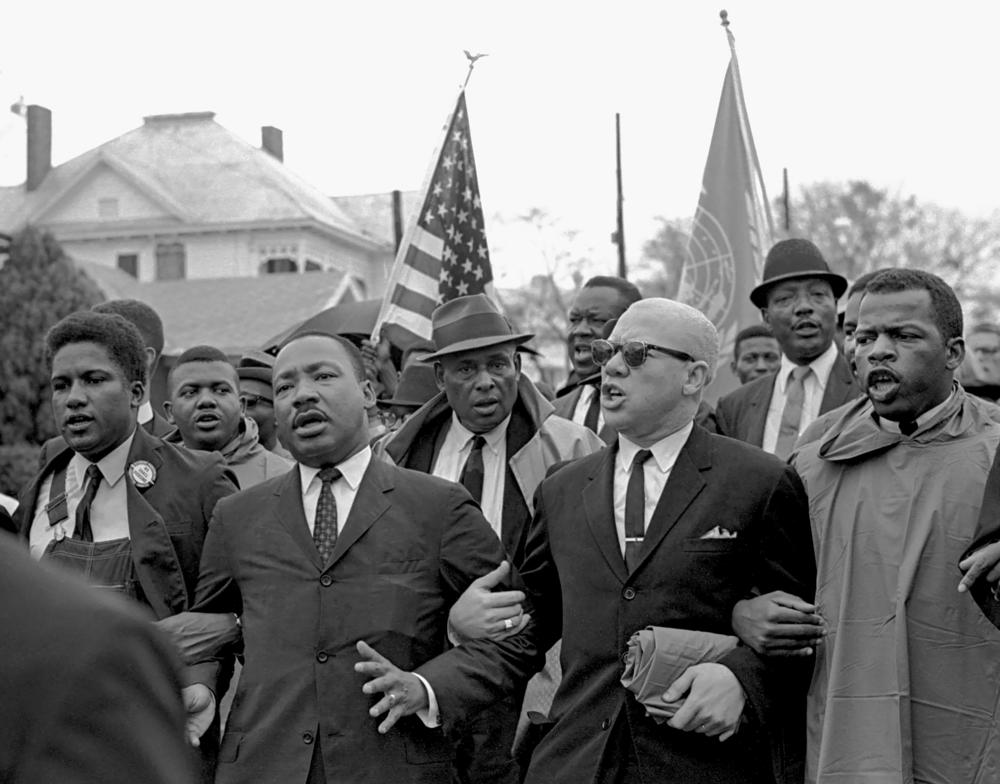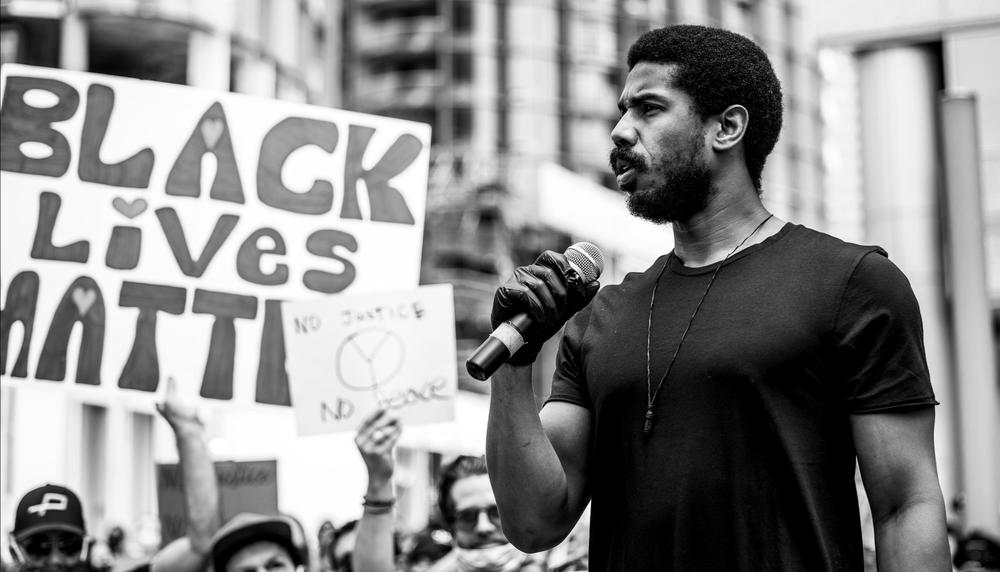Loading...
Section Branding
Header Content
A picture of U.S. democracy in action: Black people at work, rest and play
Primary Content
"As a historian, I love history, but I love people more."
Aaron Bryant seeks a deeper understanding of humanity through images.
The curator of photography and visual culture oversees new acquisitions and exhibitions for the Smithsonian National Museum of African American History and Culture. When he looks at photographs of Black people at play, worship, work or rest, Bryant operates like a detective. He wants to bring greater context to a picture, and when possible, reveal an untold story.
Bryant spoke recently with NPR about the relationships between history, democracy and African Americans as the subjects of photography. The work is personal, he said.
"It's really asking the question 'Who were these people and what were their lives like?' "
The museum interprets everyday artifacts from Black lives — celebrated, heroic and ordinary. A hymnal book or a single page of sheet music. A shawl or a pair of tap shoes. Shackles or a bill of sale. A washboard, a banjo, or a child's casket. As the country's major repository of Black history and culture, its responsibility and stature are greater than other, similar museums before it.
Tintypes from the Civil War
A couple of years before the museum's opening, the curator received a donation of a miniature album of delicate cameo pictures of Black men dating to the Civil War.
"The images are about the size of a fingernail. So, these are teeny-tiny little photographs on tin. Small enough to fit into a vest pocket or inside your coat. What's extraordinary about this album would be that these are Black Civil War soldiers," he said.
Two or three descendants of the troop leader visited the curators and offered this album.
"The story is the captain was white, his soldiers were Black," Bryant said. "And they held a special place in his heart because apparently he had gotten really ill and they helped to nurse him back to health and save his life. And so for the rest of his life, he had this album to always remember these soldiers."
"And we all looked at it, "Bryant recalled. "People began to cry because it was just absolutely amazing to think that this was a very different perspective on American history, and relationships between African Americans and white Americans and the role that African Americans played in the Civil War, " he said.
Harlem Renaissance-esque
The creative community of artists, writers and performers from the 1920s known as the Harlem Renaissance in New York City's famed neighborhood is familiar and well-documented. But Bryant's personal favorites include lesser- known figures and photographs.
"Most certainly, the first image that comes to my mind would be a photograph that we have of Gladys Bentley. She was a performer during the Harlem Renaissance. Her story is that Miss Bentley performed in drag. She performed as a drag king, so she wore, you know, a tuxedo."
"She had dancing girls who were actually men in drag," he said.
"And so, you know, even during the 1920s, you had someone who was really pushing the envelope on gender identity and sexual orientation. And what it meant to be a man or woman. And how she shows us a very different kind of Harlem."
Artists and expats
Bryant talked about photographs of entertainer Josephine Baker and writer James Baldwin, two people who enjoyed celebrity as Black Americans living abroad.
But even as famous people, Bryant pointed out, both not only found advantages to life in Paris, but he suggested as Black people they likely felt threatened when living or visiting the United States.
Bryant is fascinated by Baker's "sense of fearlessness, her resilience."
"We're all familiar with how she left America and moved to France and had an entire life there." He looks at a photo of Baker in France from the 1920s. "But, what we get to see is the young Josephine Baker onstage with this art deco backdrop of a city, a cityscape behind her, and she's doing the Charleston."
"France was instrumental — no pun intended — at bringing jazz to a global stage. Of course, it was African Americans in the military, in fact, who popularized jazz in France, I believe, during World War I. And so ... several years after the end of World War I, we have someone like Josephine Baker, who's making a name for herself in this completely different country."
Bryant turned his attention to a black and white portrait of James Baldwin from 1965.
Baldwin left the United States for Paris and also lived and wrote from Turkey during the late 1960s and 1970s. Bryant likes a photo taken by Sedat Pakay, a Turkish-born photographer. Pakay made several portraits of Baldwin in the late '60s and filmed the writer in a short documentary in 1973. In the photo, Baldwin stands with American sailors from the U.S. Navy's 6th Fleet, near the Blue Mosque in Istanbul.
"And it's absolutely a beautiful photo. ... You have two sailors who are talking to James Baldwin, and then you have a third sailor who's taking a picture of those three. And then you have the photographer, who's actually taking a photograph of all of them interacting. What we forget is that James Baldwin was ... popular not just as a writer, but as a vocal advocate of civil rights," he said.
Intimate moments from the civil rights movement
Bryant sees connections between some photos from the civil rights era and images created in the past 10 years since the founding of the Black Lives Matter movement.
The late photographer James Karales took rare photos of the Rev. Martin Luther King Jr. with his family, as well as the weeks-long protests in Selma, Ala. The photographer's widow donated his images to the museum. The pictures of King's family time are surprisingly intimate. King is seen at a dining table with his daughter Yolanda as part of a photo essay published by Look magazine, Karales' employer throughout the 1960s.
"They show King with his children in their home," Bryant said. "For James Karales, to have that kind of access was absolutely amazing. Because he presents a King to us that most people don't get to see, you know, Martin Luther King Jr. that his family and friends got to experience. "
"That's one of the wonderful things about photography. When you talk about history versus memory, these moments that Karales has captured are really important memories for people who knew King. And they create new memories for those of us who see them for the first time as well," Bryant said.
Emerging new iconic images
Devin Allen in Baltimore and Tommy Oliver in Los Angeles are two African American photographers whose recent work is now part of the museum's permanent collection.
Allen photographed protests against police brutality in the case of Freddie Gray in Baltimore. Oliver's photos come from Los Angeles protests after George Floyd's killing by a Minneapolis police officer in 2020.
Bryant said Allen's images became iconic almost overnight.
"There's the photograph of the young man running down the middle of a street and behind him is a line of police officers chasing him. And the image, within weeks, was on the front cover of Time magazine, and that helped Devin to explode, you know, someone who was an amateur photographer at the time.
Filmmaker Tommy Oliver's photo was taken over the shoulder of a speaker looking out into the distance on Hollywood Boulevard during a George Floyd protest. The museum blew up the image to mural size. It's currently displayed in the museum's "Reckoning" exhibit.
"He [Oliver] knew how to capture these incredibly dramatic moments the way he would if he were making a film," Bryant said.
"Hollywood Boulevard is packed ... full of people who have come out to demonstrate against police brutality and what happened to George Floyd. This crowd extends over a mile down Hollywood Boulevard, and literally people are standing, you know, shoulder to shoulder, ear to ear. "
"Now," he said," what's really powerful about this photograph is the fact that it's got to be one of the largest protests in the history of Los Angeles, at least in contemporary times. But also, the fact that this is happening during the pandemic," he added, "and that people felt so strongly about what happened to George Floyd that they put on their masks and they went out to protest."
"(It's) almost like they were willing to risk their own lives. Or their own health and safety to raise their voices. And again, looking at the sea of people that extends more than a mile down Hollywood Boulevard, it's quite a testament to where we are and where we were at that moment," Bryant said.
"And I think that's an iconic image that should be in the history books as well."
Copyright 2022 NPR. To see more, visit https://www.npr.org.
